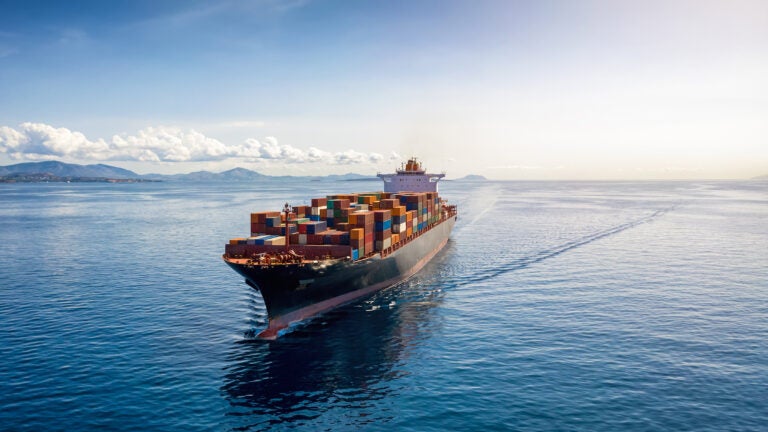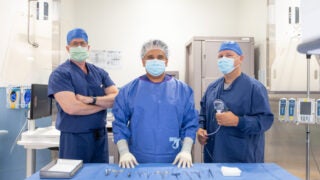
Maritime shipping accounts for nearly 3% of global greenhouse gas emissions, but current solutions are expensive or impractical for long-distance voyages. (Photo/iStock)
USC technology may reduce shipping emissions by half
New research shows how a shipboard system using limestone and seawater could cut maritime CO2 emissions by 50%.
Scientists at USC and Caltech, in collaboration with startup company Calcarea, have developed a promising shipboard system that could remove up to half of carbon dioxide emitted from shipping vessels by converting it into an ocean-safe solution.

The breakthrough, described in Science Advances, describes how the system could reduce carbon emissions from the shipping industry — one of the world’s most difficult-to-decarbonize sectors.
“What’s beautiful about this is how simple it is,” said William Berelson, the Paxson H. Offield Professor in Coastal and Marine Systems at the USC Dornsife College of Letters, Arts and Sciences and co-corresponding author of the study. “We’re speeding up a process the ocean already uses to buffer CO2 — but doing it on a ship, and in a way that can meaningfully reduce emissions at scale.”
The process mimics a natural chemical reaction in the ocean. As ships move through seawater, CO2 from their exhaust is absorbed into water pumped onboard, making it slightly more acidic. That water is then passed through a bed of limestone, where the acid reacts with the rock to form bicarbonate — a safe, stable compound that exists naturally in seawater. The treated water, now stripped of CO2, is then discharged back into the ocean.
“What’s most exciting to me is that this started as a pure science question: How does the ocean buffer CO2?” Berelson added. “From there, we realized we might have a real-world solution that could help fight climate change.”
From lab to sea
Maritime shipping accounts for nearly 3% of global greenhouse gas emissions. Yet current solutions, like low-carbon fuels and electrification, remain expensive or impractical for long-distance voyages.
“We see our approach as a complementary strategy that could help ships reduce their environmental impact without major design overhauls,” said Jess Adkins, co-founder and CEO of Calcarea and the Smits Family Professor of Geochemistry and Global Environmental Science at Caltech.
In the lab, the researchers tested key elements of the process, using controlled amounts of seawater, limestone and CO2. Their experiments aligned closely with theoretical predictions, giving them confidence to scale up their modeling to the size necessary to work on real vessels.
“We wanted to show that we not only understood the chemistry — we could also predict how much CO2 would be neutralized,” Berelson said. “That allowed us to model what this might look like on an actual ship.”
The study also used sophisticated ocean modeling to examine what would happen when the bicarbonate-rich water is released back into the sea. Simulations tracked a hypothetical ship traveling repeatedly between China and Los Angeles over a 10-year period, discharging treated water along the route. The models showed negligible impact on ocean pH and chemistry — an important validation for the technology’s environmental safety.
The researchers estimate that widespread adoption of the technique could reduce shipping-related CO2 emissions by 50%.
“This is the kind of scale we need if we’re going to make a real dent in global emissions,” Berelson said. “It’s not going to happen overnight, but it shows what’s possible.”
Bringing the technology to market
The academic work is running in parallel with Calcarea, a startup company working to bring the technology to market. The company is in early discussions with commercial shippers and exploring pilot programs that would test the technology on working vessels.
Calcarea previously announced a collaboration with Lomar Shipping’s corporate venture lab, Lomar Labs, to commercialize and deploy their shipboard carbon capture system.
“Scalability is built into our design,” Adkins said. “We’re engineering a system that can integrate with existing vessels and be adopted fleetwide. By working directly with industry partners, we’re accelerating the path from lab to ocean.”
Berelson, a co-founder and scientific advisor for Calcarea, continues to study the science behind the approach, including reaction rates and long-term impacts on ocean chemistry.



